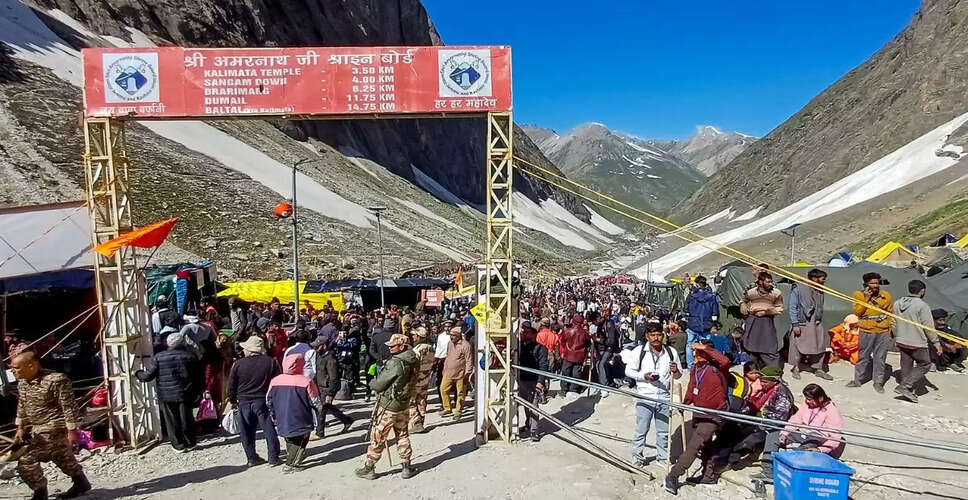Amarnath Yatra Routes Designated as No-Flying Zones Amid Security Concerns

Amarnath Yatra's New Safety Measures
In response to heightened safety issues and the potential for drone attacks, the Jammu and Kashmir administration has officially designated the entire Amarnath Yatra pilgrimage route as a ‘No Flying Zone.’
According to officials, the Home Department of the Union Territory has implemented a ban on all aerial devices, including drones, UAVs, and balloons, along both the longer Pahalgam route and the shorter Baltal route in the southern Kashmir Himalayas, following guidance from the Union Ministry of Home Affairs.
“This initiative is part of a comprehensive security protocol aimed at protecting pilgrims and support personnel from emerging threats, particularly the potential misuse of drone technology by militant groups.” However, exceptions will be made for medical emergencies, disaster response, or surveillance by security agencies.
This year's yatra is scheduled to commence on July 3 and conclude on August 9, spanning 38 days, which is a reduction from last year's 52-day pilgrimage. Officials indicated that this shorter duration is intended to enhance security and improve planning.
Enhanced Security Following Pahalgam Incident
Stronger Measures After Pahalgam Attack
The Amarnath Yatra draws hundreds of thousands of Hindu devotees from across India and beyond, and has historically been a target for terrorist organizations. Recently, security forces have expressed increasing concern over the use of drones for smuggling weapons or executing attacks, marking a new tactic in insurgency-affected regions.
In light of the terror attack on April 22 in Pahalgam, which resulted in the deaths of 25 tourists and a local resident, additional security measures are being implemented to ensure the safety of the yatra. Nearly 580 companies of central armed police forces (CAPF) will be stationed along the pilgrimage route, complemented by aerial surveillance, RFID tracking of pilgrims, and multiple layers of security.
With only two weeks remaining before the pilgrimage begins, authorities are exercising extreme caution. “The no-flying directive is a precautionary yet essential measure, considering the nature of the threats we currently face,” stated a police official.
The annual pilgrimage to the cave shrine, located at an elevation of 3,880 meters and dedicated to Lord Shiva, is one of India's most significant religious events and poses a considerable challenge for the administration to oversee.
